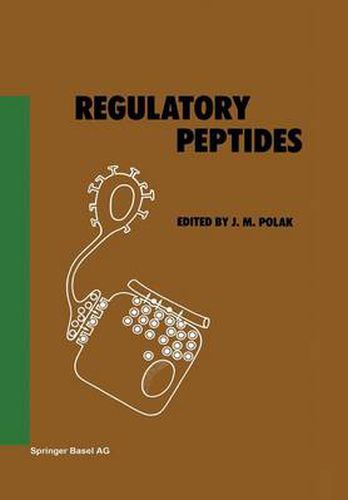Readings Newsletter
Become a Readings Member to make your shopping experience even easier.
Sign in or sign up for free!
You’re not far away from qualifying for FREE standard shipping within Australia
You’ve qualified for FREE standard shipping within Australia
The cart is loading…






This title is printed to order. This book may have been self-published. If so, we cannot guarantee the quality of the content. In the main most books will have gone through the editing process however some may not. We therefore suggest that you be aware of this before ordering this book. If in doubt check either the author or publisher’s details as we are unable to accept any returns unless they are faulty. Please contact us if you have any questions.
J. M. Polak and S. R. Bloom For some time Experientia has published, as a unique feature, interdis ciplinary multi-author reviews, giving a comprehensive overview of sub jects regarded as ‘growing edges’ of science. The enthusiasm shown by the readers was contagious and thus it was felt necessary to compile a special volume dealing with the novel aspects of regulatory peptides. This book covers some of the growing areas in regulatory peptide research and, although it is based on the original volume of Experientia, it is expanded and updated. The topic of ‘regulatory peptides’ is relatively young and has grown at an unprecedented pace, from the embryonic conception of ‘gut hor mones’ or ‘brain neuropeptides’ some 15 years ago to the realisation that these active pep tides are found, almost without exception, in every part of l8 23 the body in all vertebrate and many invertebrate species * Why the term ‘regulatory peptides’? It represents a convenient label encompassing both the active peptides present in nerves, which are re leased as (putative) neurotransmitters, and those in endocrine cells, which act locally or at a distance as circulating hormones, these being the l8 main components of the so-called diffuse neuroendocrine or APUD 17 system * Morphological studies support this physiological viewpoint.
$9.00 standard shipping within Australia
FREE standard shipping within Australia for orders over $100.00
Express & International shipping calculated at checkout
This title is printed to order. This book may have been self-published. If so, we cannot guarantee the quality of the content. In the main most books will have gone through the editing process however some may not. We therefore suggest that you be aware of this before ordering this book. If in doubt check either the author or publisher’s details as we are unable to accept any returns unless they are faulty. Please contact us if you have any questions.
J. M. Polak and S. R. Bloom For some time Experientia has published, as a unique feature, interdis ciplinary multi-author reviews, giving a comprehensive overview of sub jects regarded as ‘growing edges’ of science. The enthusiasm shown by the readers was contagious and thus it was felt necessary to compile a special volume dealing with the novel aspects of regulatory peptides. This book covers some of the growing areas in regulatory peptide research and, although it is based on the original volume of Experientia, it is expanded and updated. The topic of ‘regulatory peptides’ is relatively young and has grown at an unprecedented pace, from the embryonic conception of ‘gut hor mones’ or ‘brain neuropeptides’ some 15 years ago to the realisation that these active pep tides are found, almost without exception, in every part of l8 23 the body in all vertebrate and many invertebrate species * Why the term ‘regulatory peptides’? It represents a convenient label encompassing both the active peptides present in nerves, which are re leased as (putative) neurotransmitters, and those in endocrine cells, which act locally or at a distance as circulating hormones, these being the l8 main components of the so-called diffuse neuroendocrine or APUD 17 system * Morphological studies support this physiological viewpoint.